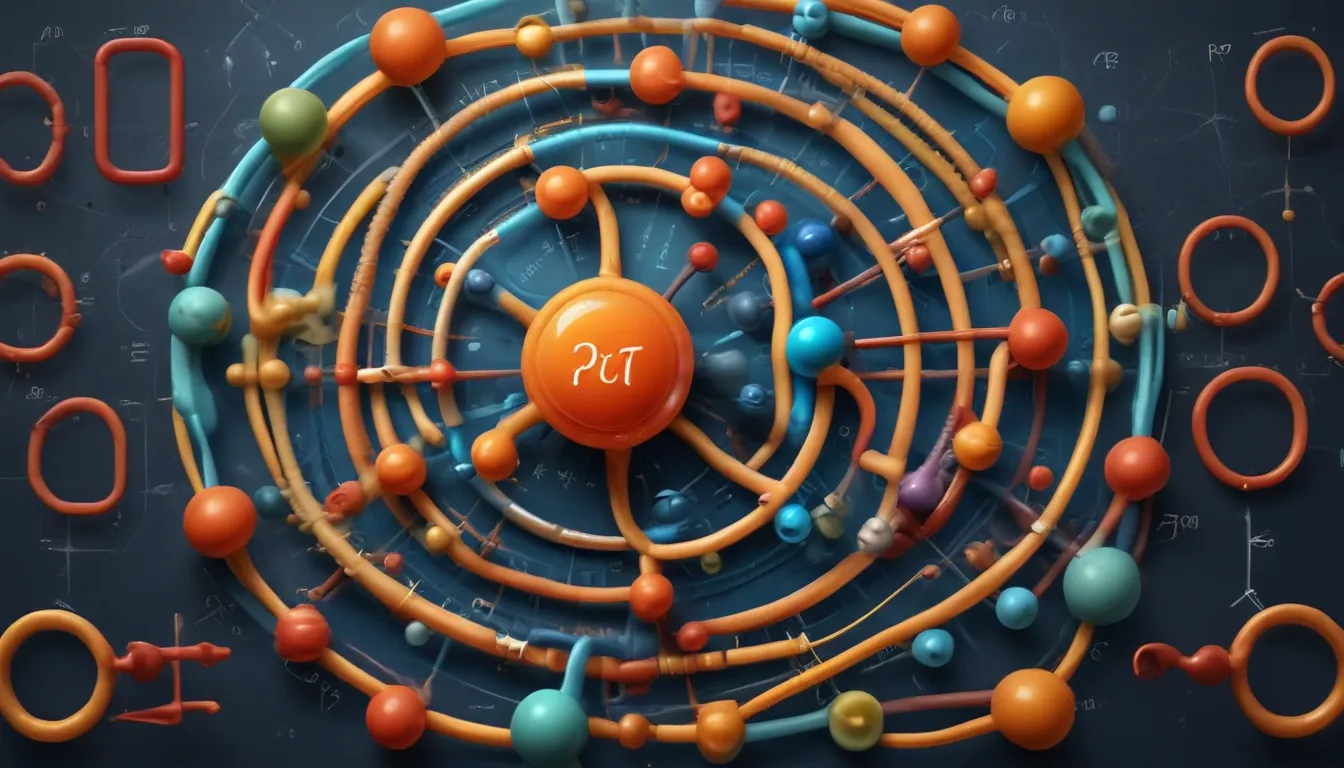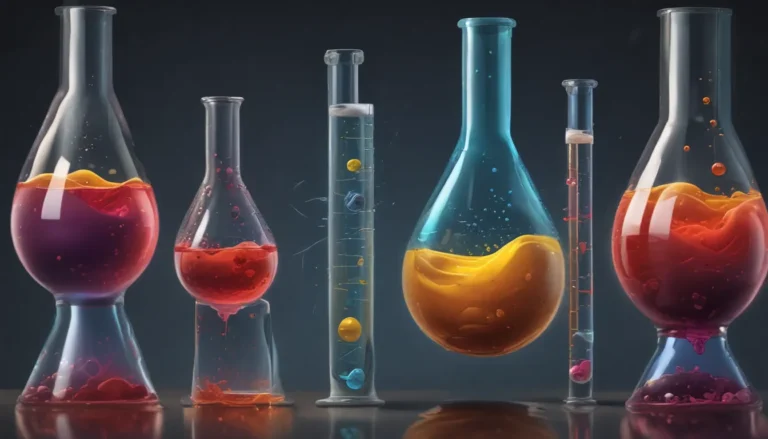A Note About Images: The images used in our articles are for illustration purposes only and may not exactly match the content. They are meant to engage readers, but the text should be relied upon for accurate information.
Welcome to the world of pi molecular orbitals, where the intricate dance of electrons shapes the behavior of molecules. From their role in aromatic compounds to their influence on organic electronics, pi molecular orbitals are key players in the realm of chemistry. In this informative guide, we will delve into 12 surprising facts about pi molecular orbitals, shedding light on their properties and significance in various chemical phenomena. Whether you are a chemistry enthusiast or a student exploring the depths of organic chemistry, these facts will captivate your interest and expand your knowledge of this fascinating concept.
Understanding Pi Molecular Orbitals
Pi molecular orbitals, also known as π orbitals, are special electron clouds that form from the overlapping of p orbitals in a molecule. They play a crucial role in organic chemistry, particularly in the bonding and stability of aromatic compounds. These molecular orbitals act like secret keys, unlocking new possibilities in the world of chemistry and helping scientists create better drugs, electronic devices, and materials.
The Intriguing World of Pi Molecular Orbitals
-
Pi Molecular Orbitals in Benzene: Benzene, a well-known aromatic compound, is characterized by the presence of six pi molecular orbitals. These orbitals form a ring-like structure above and below the benzene molecule, contributing to its unique stability.
-
Overlapping of P Orbitals: The formation of pi molecular orbitals occurs when the p orbitals of adjacent atoms align and overlap. This overlap allows for the delocalization of electrons, resulting in the formation of multiple bonding and antibonding orbitals.
-
Different Energy Levels of Pi Molecular Orbitals: Pi molecular orbitals can have different energy levels depending on their bonding or antibonding nature. The bonding pi orbitals have lower energy levels, while the antibonding pi orbitals have higher energy levels.
-
Contribution to Aromaticity: The presence of pi molecular orbitals in aromatic compounds is a key factor contributing to their stability and aromaticity. The delocalization of electrons within these orbitals creates a resonance effect, enhancing the compound’s stability.
-
Extended Conjugation in Pi Systems: Pi molecular orbitals can extend beyond individual molecules and involve multiple conjugated systems. This extended conjugation imparts unique electronic and optical properties to the compounds, making them useful in various applications.
-
Role in Electron Delocalization: Pi molecular orbitals facilitate the delocalization of electrons, allowing for better conductivity in certain materials and playing a crucial role in electron transfer reactions.
-
Pi Molecular Orbitals in Organic Electronics: The understanding and manipulation of pi molecular orbitals have paved the way for advancements in organic electronics. These orbitals are utilized in the design of organic semiconductors, organic light-emitting diodes (OLEDs), and organic solar cells.
-
Relationship with Hückel’s Rule: Pi molecular orbitals follow Hückel’s rule, which states that aromatic compounds must have a certain number of pi electrons to exhibit aromaticity. This rule helps predict and understand the behavior of pi systems in various organic molecules.
-
Pi Molecular Orbitals in Natural Products: Many natural products feature pi molecular orbitals in their structures. These orbitals play a crucial role in determining their biological activities and properties.
-
Pi Molecular Orbitals in Transition Metal Complexes: Pi molecular orbitals play a significant role in transition metal complexes. These orbitals can participate in metal-ligand bonding and influence the reactivity and stability of these complexes.
-
Computational Tools for Studying Pi Molecular Orbitals: Advancements in computational chemistry have provided powerful tools for studying pi molecular orbitals. Methods such as density functional theory (DFT) and molecular orbital calculations allow researchers to analyze and predict the behavior of these orbitals in various systems.
Unraveling the Mysteries of Pi Molecular Orbitals
In conclusion, exploring the world of pi molecular orbitals unveils the intricate dance of electrons that shapes the behavior of molecules. From their role in aromaticity and conjugation to their impact on the electronic properties of molecules, pi molecular orbitals play a crucial role in shaping the behavior of organic compounds. Their distribution and arrangement greatly influence the spectroscopic properties of materials, making them valuable tools in characterizing compounds. Whether you are an aspiring chemist or simply curious about the wonders of nature, understanding pi molecular orbitals is essential to unraveling the complexities of chemical systems. So, next time you encounter the concept of pi molecular orbitals, remember these surprising facts and appreciate the vital role they play in the world of chemistry.
FAQs: Exploring Pi Molecular Orbitals
-
What are pi molecular orbitals? Pi molecular orbitals are molecular orbitals that result from the overlapping of p orbitals in a molecule. They are involved in the delocalized electron density above and below the plane of a molecule, often found in conjugated systems.
-
What is the significance of pi molecular orbitals? Pi molecular orbitals play a crucial role in determining the chemical reactivity, electronic properties, and spectroscopic behavior of organic compounds. They contribute to concepts such as aromaticity, conjugation, and delocalization of electrons.
-
How are pi molecular orbitals different from sigma molecular orbitals? Pi molecular orbitals result from the overlap of p orbitals perpendicular to the internuclear axis, while sigma molecular orbitals arise from the overlap of orbitals along the internuclear axis. Pi bonds are typically weaker than sigma bonds but confer unique properties to molecules.
-
Can pi molecular orbitals exist in inorganic compounds? Yes, pi molecular orbitals are not exclusive to organic compounds. They can also be present in inorganic compounds, especially those with conjugated systems or double bonds involving p orbitals.
-
How do pi molecular orbitals contribute to aromaticity? Pi molecular orbitals are responsible for aromaticity in organic compounds. Aromatic compounds have a fully conjugated pi system, leading to a stable, delocalized electron cloud that exhibits unique properties such as enhanced stability and distinctive chemical reactivity.
Embark on an Exciting Journey Through the World of Chemistry
Exploring pi molecular orbitals is just the beginning of your journey into the fascinating world of chemistry. Dive deeper into the mysteries of quantum chemistry and uncover the secrets behind chemical reactions at the subatomic level. Gain a comprehensive understanding of chemical bonding by learning about the different types of molecular orbitals and their roles in shaping molecules. Lastly, embark on an exciting adventure through the vast realm of organic chemistry, where you’ll discover the building blocks of life and the countless applications of organic compounds in our daily lives.
Was this page helpful?
Our commitment to delivering trustworthy and engaging content is at the heart of what we do. Each fact on our site is contributed by real users like you, bringing a wealth of diverse insights and information. To ensure the highest standards of accuracy and reliability, our dedicated editors meticulously review each submission. This process guarantees that the facts we share are not only fascinating but also credible. Trust in our commitment to quality and authenticity as you explore and learn with us.






